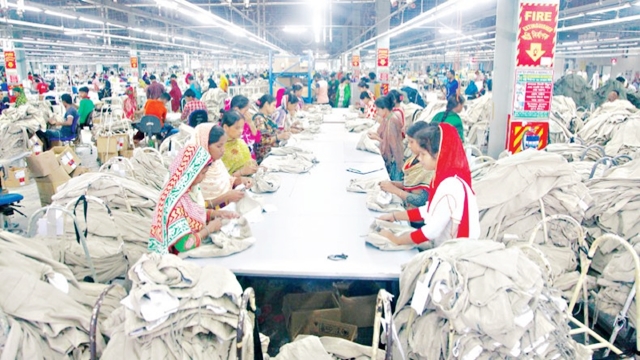Rubel Rana
Published:2018-07-25 16:57:17 BdST
Highest in price competitiveness, lowest in compliance: study
FT ONLINE
Bangladesh offers the most competitive prices for the readymade garment products in the world but sourcing from the country involves the highest compliance risks and the longest lead time, according to a recent study.
The Department of Fashion & Apparel Studies of the University of Delaware in collaboration with the United States Fashion Industry Association conducted the study titled ‘The USFIA Fashion Industry Bench Marking Study 2018’.
The study was based on a survey of 28 executives at the leading US fashion companies from April, 2018 to May, 2018.
Approximately 68 per cent of respondents are self-identified retailers, 48 per cent self-identified brands, 56 per cent self-identified importers/wholesalers, and 4 per cent provide various fashion-related services.
According to the study, Bangladesh moved two steps up on the sourcing list in the US to become the fifth sourcing destination this year from seventh in 2017.
Nearly half of the respondents expected to somewhat increased sourcing from Bangladesh through 2020, up from 32 per cent in 2017, another seven per cent expected to strongly increase sourcing from the country, the study said.
The respondents expressed more interest in expanding sourcing from Bangladesh in the next two years as companies are actively seeking China alternatives.
The report found that ‘Made in Bangladesh’ enjoyed a prominent price advantage over many other Asian suppliers but the US companies still regarded risk of compliance as a notable weakness.
‘Since compliance is so important to US fashion companies, concerns about the compliance risks involved in sourcing from Bangladesh could hold companies back from giving more orders to the country,’ the report read.
Most of the respondents in the survey said that Bangladesh offered the most competitive price, followed by Vietnam.
They also said that cost competitiveness in many Asian countries weakened in 2018 compared with that a year ago.
The report showed that the efficiency of Bangladesh was lowest in managing supply chain management, while China and Vietnam offered shorter lead time than other countries in Asia.
‘Although China’s position as the top sourcing destination is unshakable, companies are actively seeking alternatives to “Made in China”. This does not seem to be due to concerns about cost, but rather the worries about the escalating US-China trade tensions,’ the study read.
Benefiting from the diversification away from China, Vietnam and Bangladesh are expected to play a bigger role as apparel suppliers for the US market in the near future, it said.
The respondents, however, said that sourcing from Bangladesh, Cambodia, and India involved higher compliance risks in general.
According to the survey, Asia as a whole continued to take the lead as the dominant sourcing region for US fashion companies as among the 10 most-utilised sourcing destinations in 2018, eight are located in Asia.
As per the study, the respondents sourced from as many as 51 countries or regions in 2018, the same as in 2017.
Consistent with the US official trade statistics, China (100 per cent of the respondents) and Vietnam (96 per cent of the respondents) continued to be the two most-utilised sourcing destinations, followed by Indonesia (79 per cent), India (75 per cent), Bangladesh (75 per cent), and Cambodia (61 per cent), the report showed.
According to the report, 90 per cent of the respondents expect their production or sourcing cost to increase in 2018, far more than 60 per cent last year.
The intensified trade tensions caused by the protectionist US trade policy agenda might force US companies to switch to more expensive sourcing destinations, it said.
‘US apparel imports from China actually dropped by 1.6 per cent between January and April 2018, compared with a 1.7 per cent increase for products from rest of the world over the same period. Thus, the worry about a looming US-China trade war is more likely to be the key driver behind the respondents’ eagerness to find China’s alternative than cost considerations,’ the study observed.
Unauthorized use or reproduction of The Finance Today content for commercial purposes is strictly prohibited.


